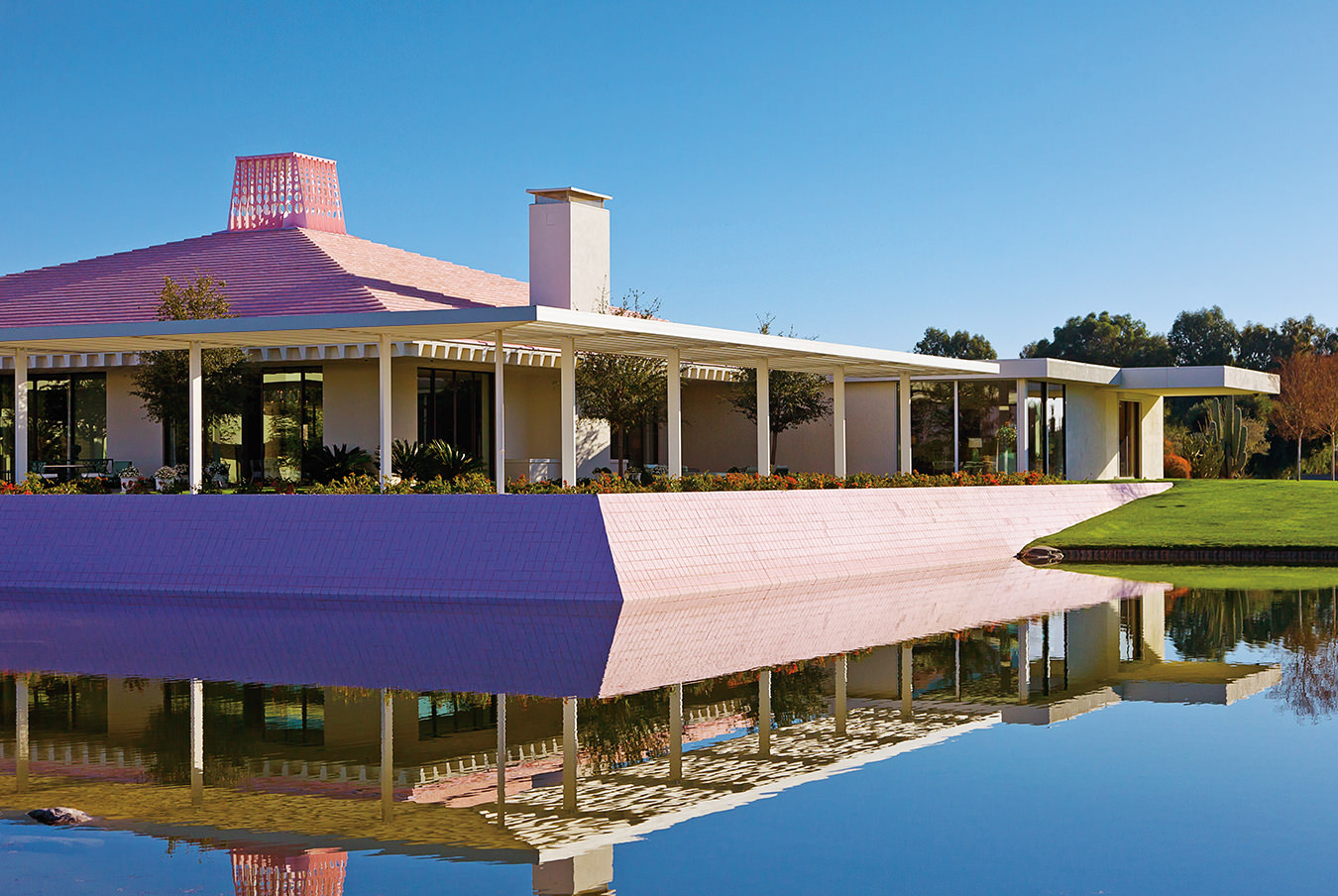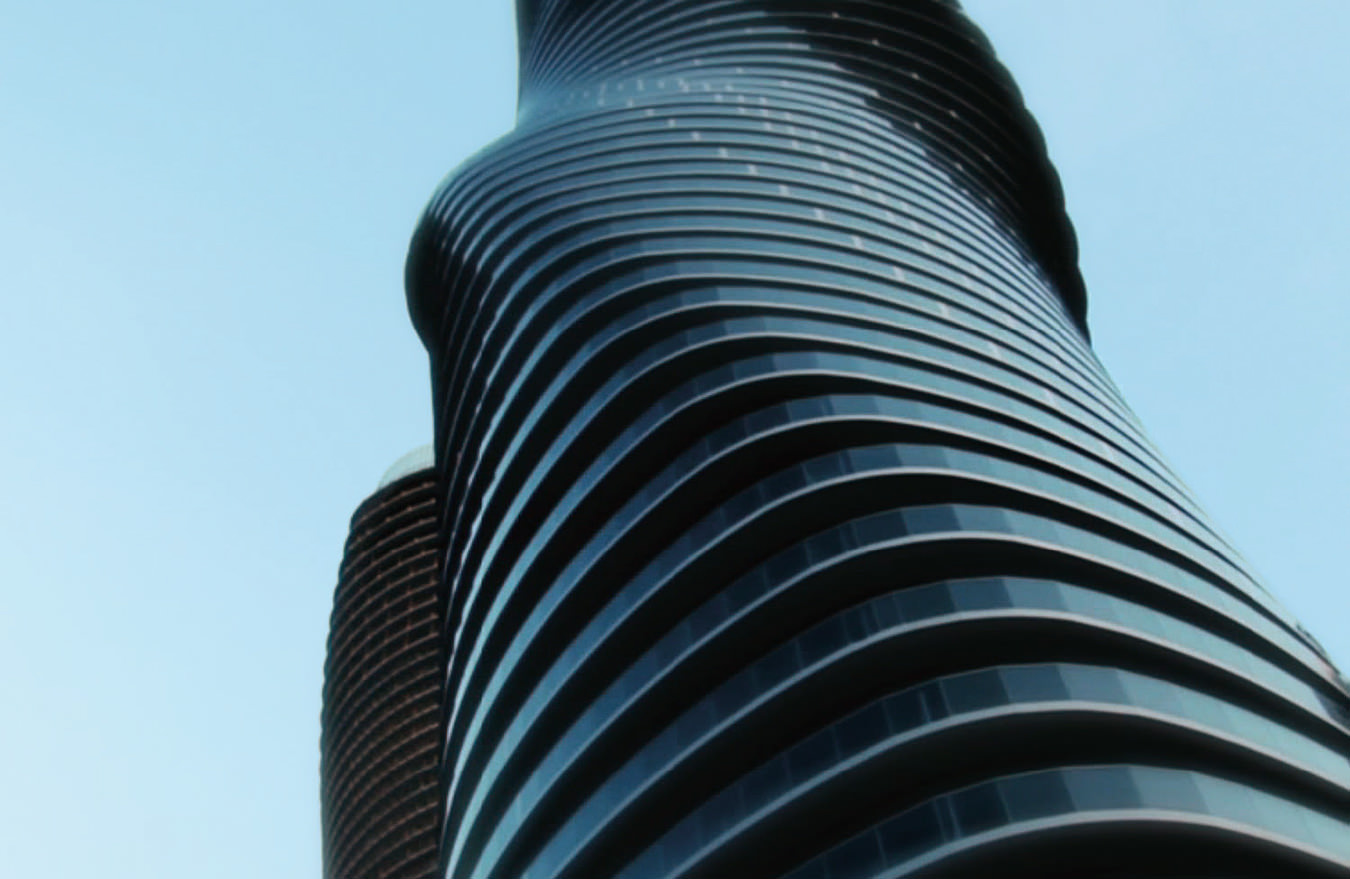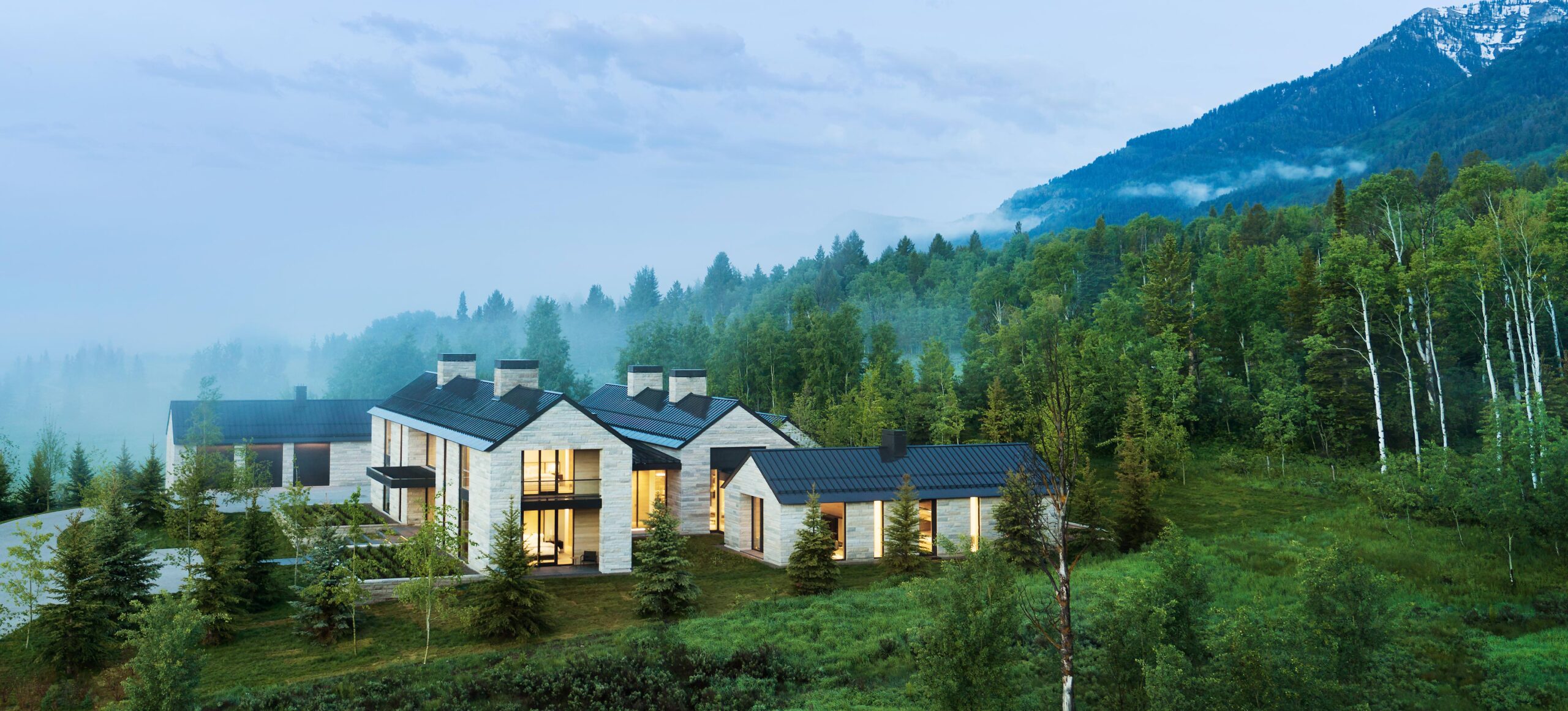
Rocky Mountain Grandeur: Five Shadows House by CLB Architects
Range of dwelling.
Anyone who has visited the communities that line the eastern slopes of the Rockies knows there is an honesty and straightforwardness in the architectural vernaculars. Agricultural and ranching buildings in settlements outside the major cities have to contend with living in the shadow of the mountains’ grandeur, against which even city skylines feel paltry, diminutive. CLB Architects, with offices in Jackson Hole, Wyoming, and Boseman, Montana, have created a multistructure residence called Five Shadows that integrates the peaks of the mountains while maintaining a reference to a Rocky Mountain rural architectural tradition. Sited near a development on an elevated piece of land that provides privacy, the home looks toward the Gros Ventre Range.
“The site landscape and environment had a dramatic impact on the orientation of the structures to create a variety of spaces that could be enjoyed at different times of the year,” notes Sam Ankeny, one of the firm’s principals. Laid out in a symmetrical compound, the structures reference the simplicity of the agrarian style. Stone façades are accented by metal detailing and roofing. The stone, chosen, according to Ankeny, for its longevity and low-maintenance qualities, adds a sense of strength, but its light colour also signals the modern interiors awaiting visitors inside.
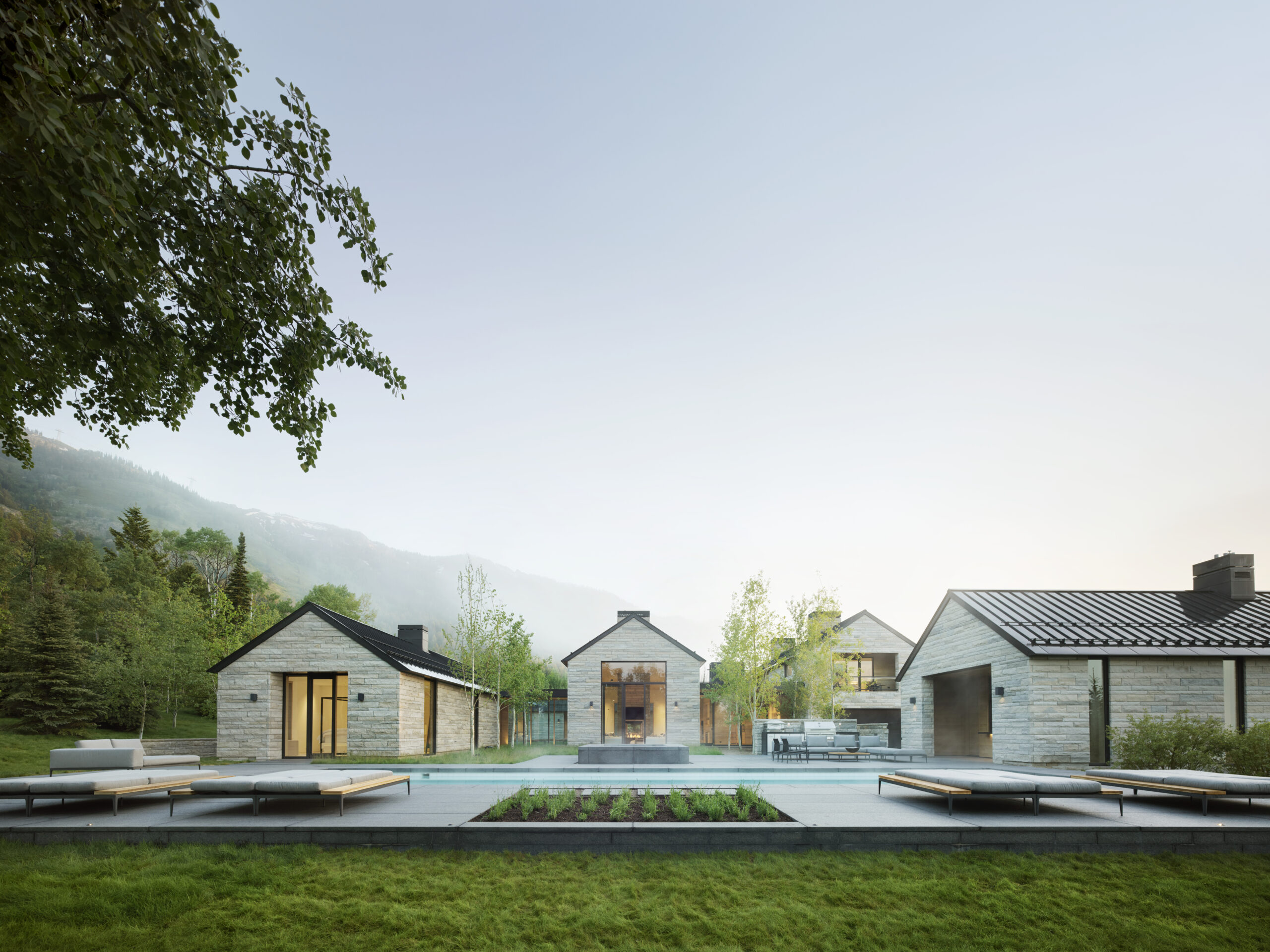
Five separate structures constitute the makeup of Five Shadows, with outdoor areas including a courtyard facing a grove of aspen trees and a pool terrace.
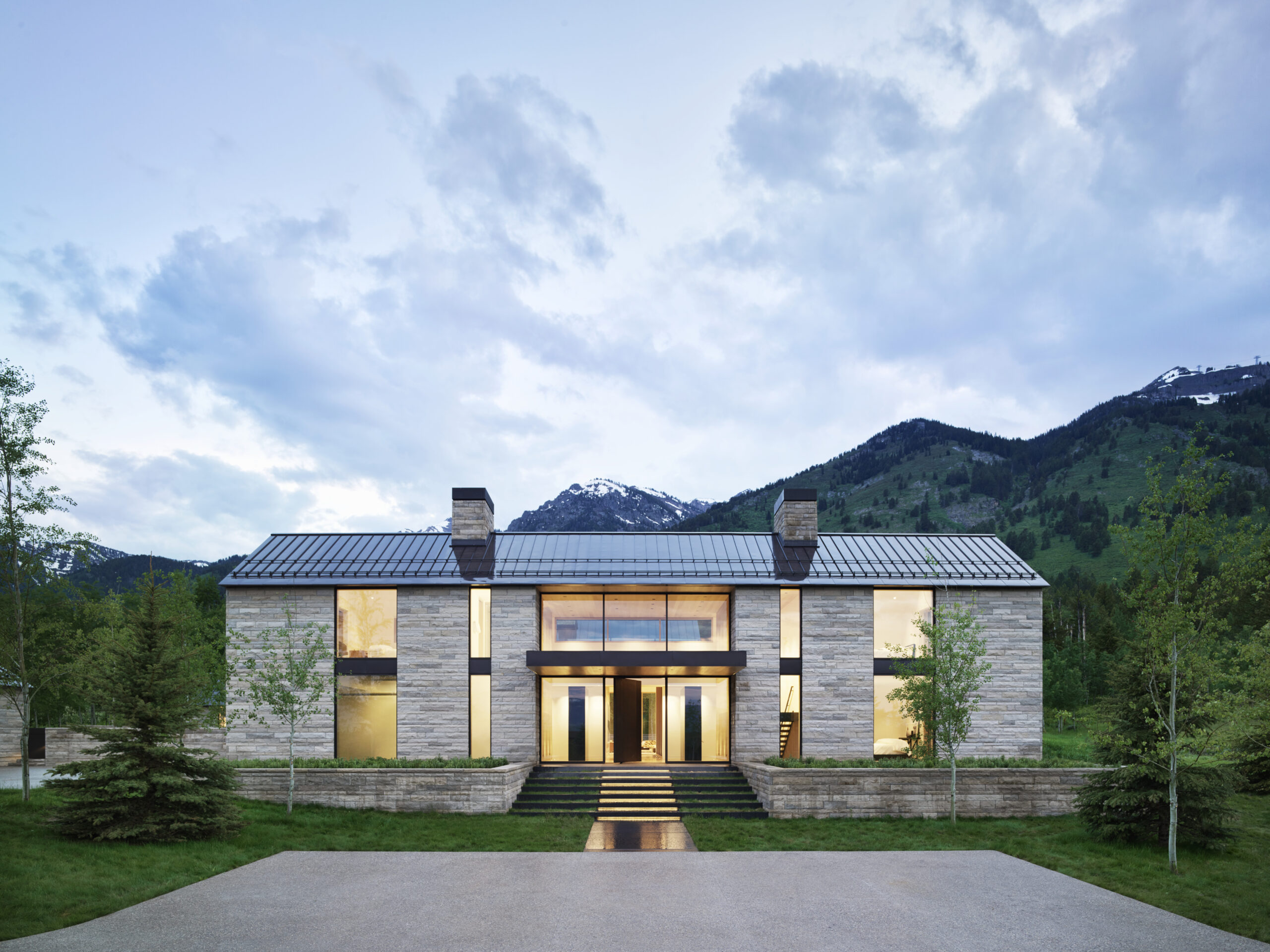
The outdoor spaces between the structures reflect the changing needs of the client. Initially, the home was to be used for ski vacations, but the owners came to realize they wanted to spend more time at the holiday home during the summer as well.
Stemming from the obvious natural grandeur and overarching trends in architecture, the glass pavilions promote the experience of being in nature by directing inhabitants through corridors with floor-to-ceiling windows to access the various structures. But creating viewing points into nature is only one aspect of the residence’s disarticulation. The main building’s stone is striated by vertical windows and houses most of the public areas, while the smaller structures contain the more private bedrooms and spaces. The latter also help define the outdoor areas, which include a pool pavilion, a patio, and a courtyard that faces out into an aspen grove.
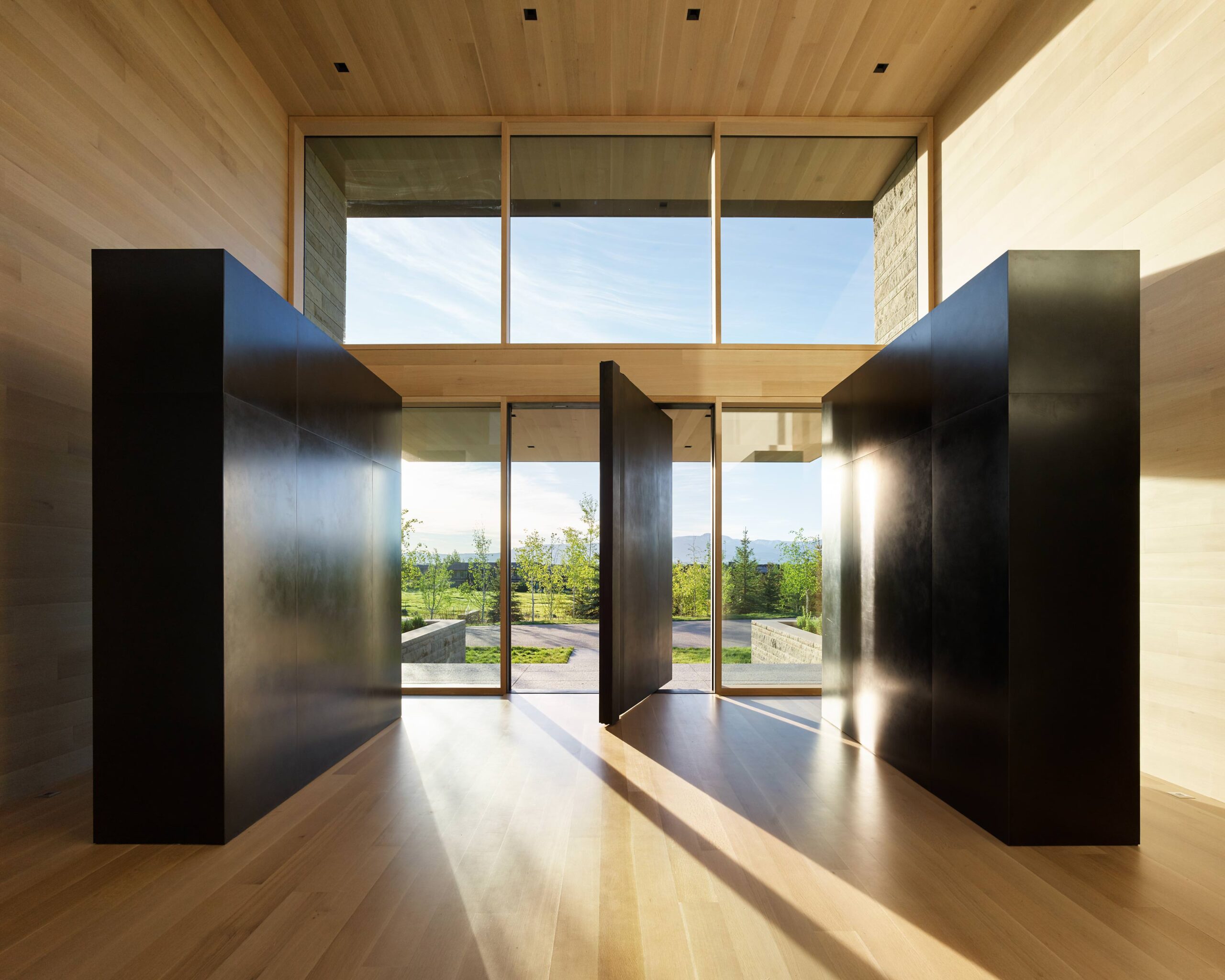
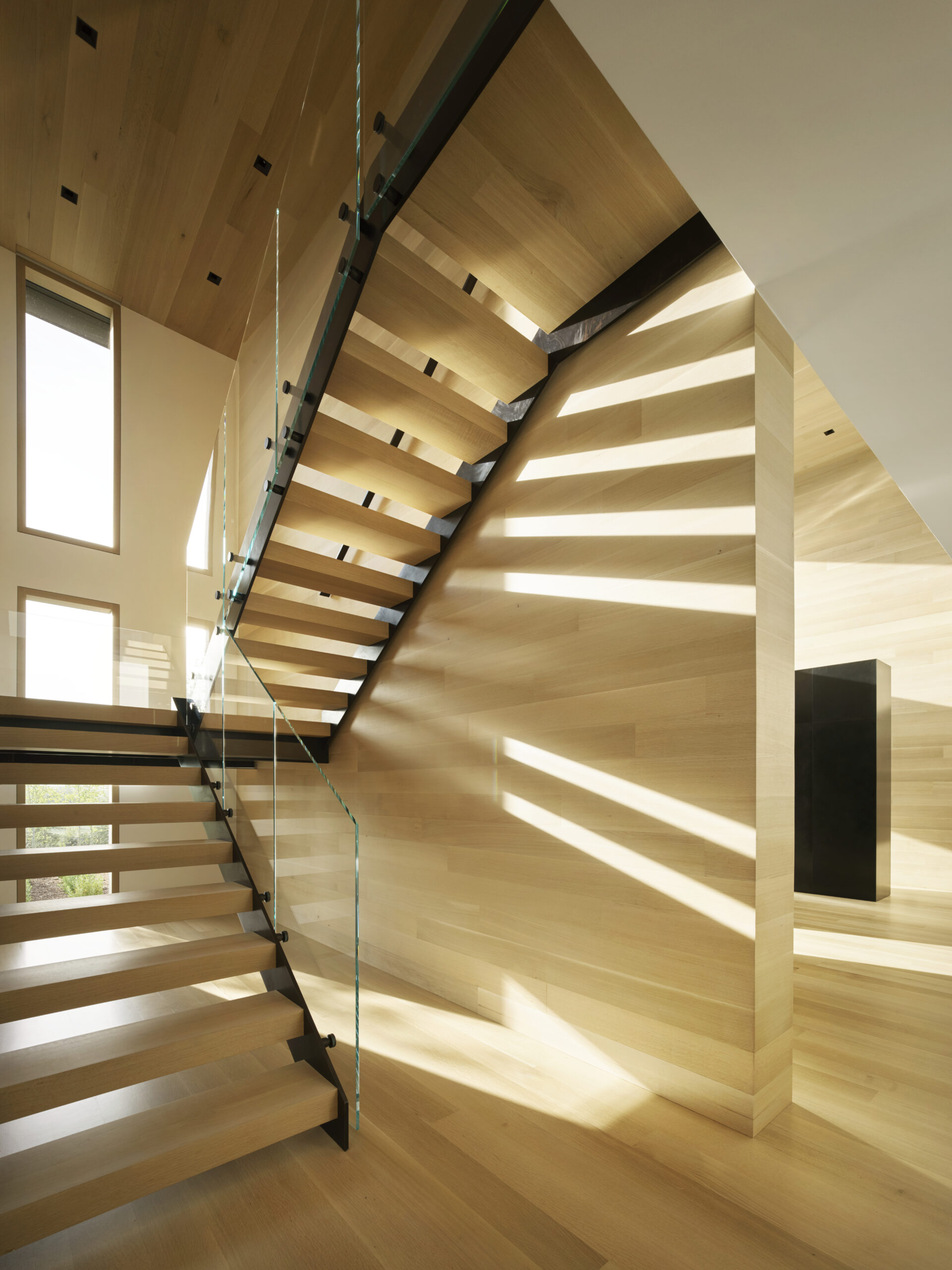
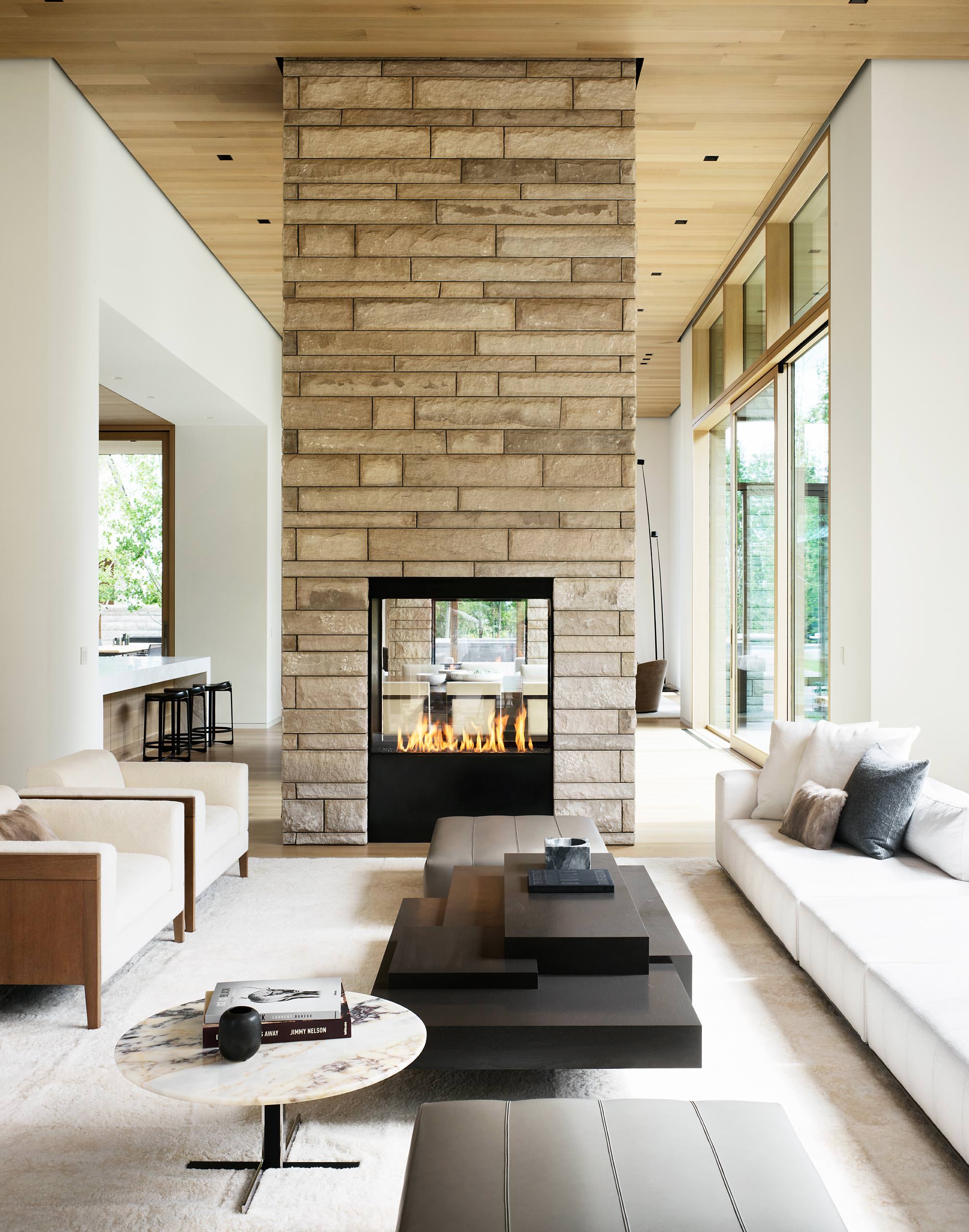
The layout of the home becomes more apparent as you move through. An auto court leads to the two-storey main structure. On the first floor, either side of the entry are a garage and a bedroom; above them on the second floor are two more bedrooms. This primary envelope slopes down into another parallel single-volume structure by means of a kitchen that serves as a connector. In this secondary structure, a grand central dining area looks out onto the submerged patio area and the aspen grove beyond. An imposing stone-clad pillar fireplace separates the dining area from a primary living room that then leads to one of the glass hallways connecting to a den and private areas. On the other side of the dining area is the family room, beyond which lies the primary bedroom at the farthest arm from the main structure near the property line and the pool.

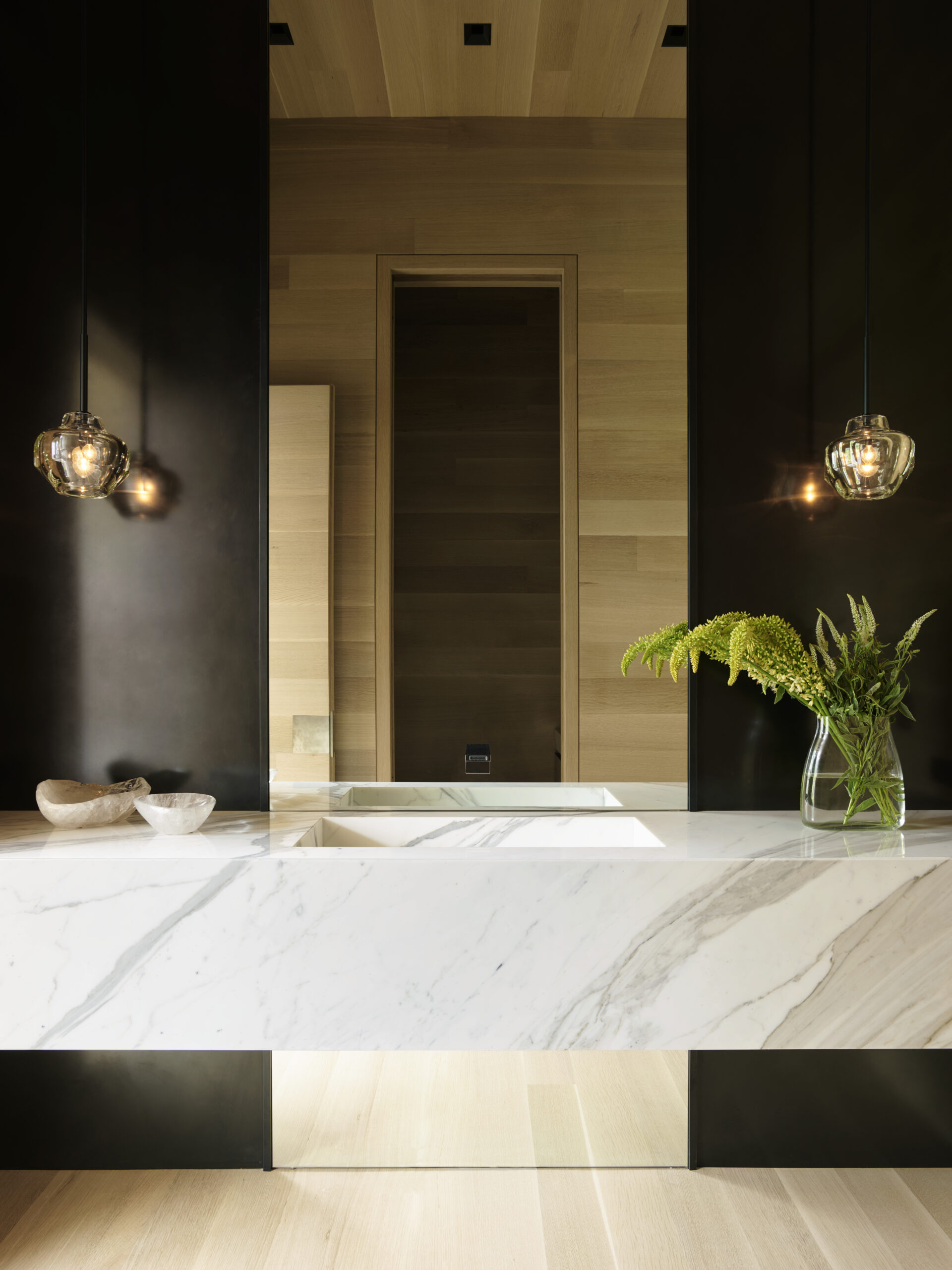
As you enter the house, a monolithic metal door turns on an offset hinge, and two metal rectangular pillars flank the interior of the foyer. The door is surrounded by two windows with clerestories above—an epic entrance that contrasts the bursting light from the glazing with the dark forms of the pillars. Rift-sawn white oak boards line the floor, walls, and ceilings.
The spaciousness of the primary living areas in the main structures tapers into intimate rooms with low-slung furniture that evokes a sense of leisure marking the luxuriousness of the property within the agrarian reference. Granite backsplashes, modern furniture upholstered in natural linen, and minimalist light fixtures featuring glass and hoops of bronze add to the soft, plush sophistication.
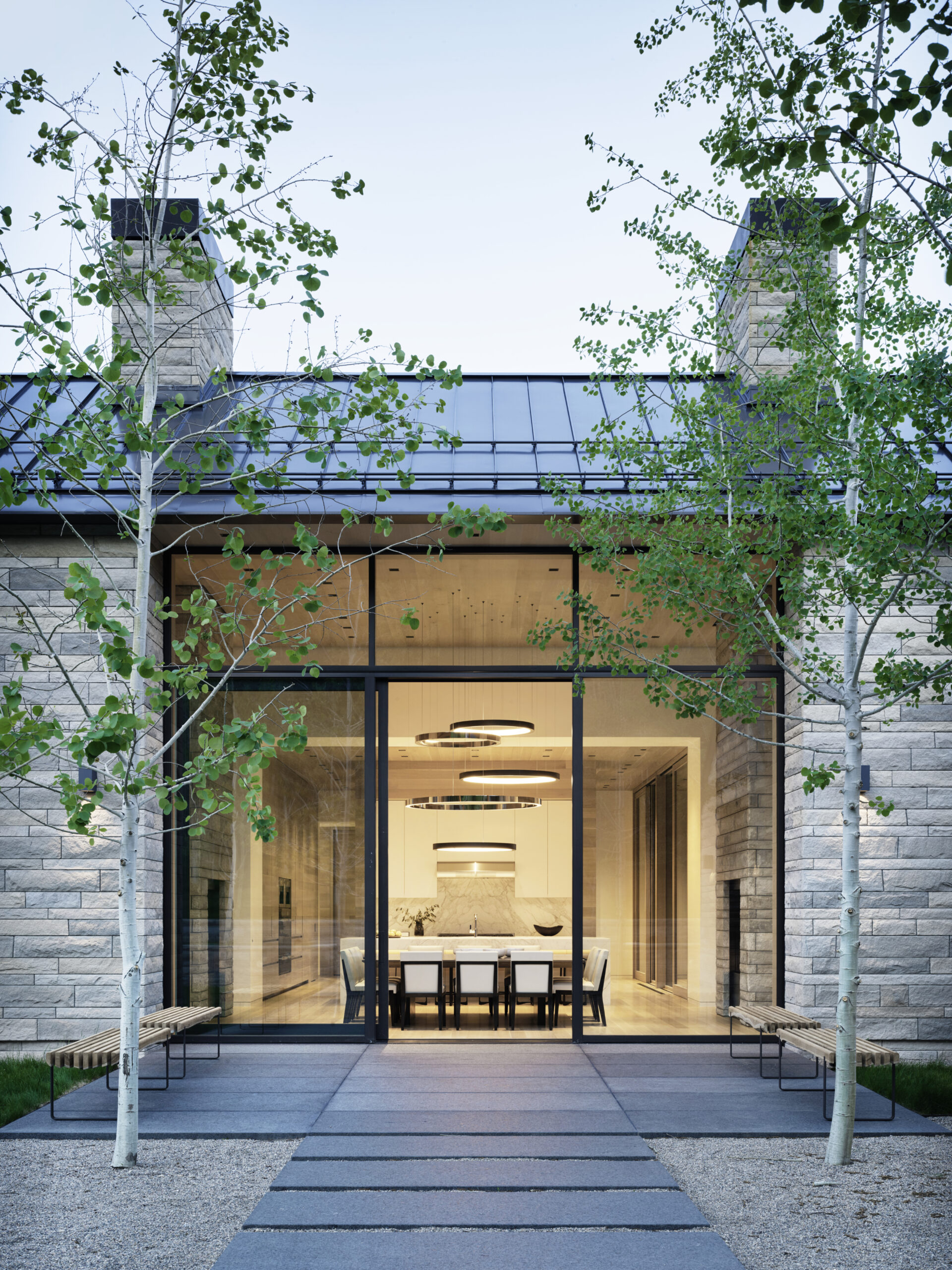
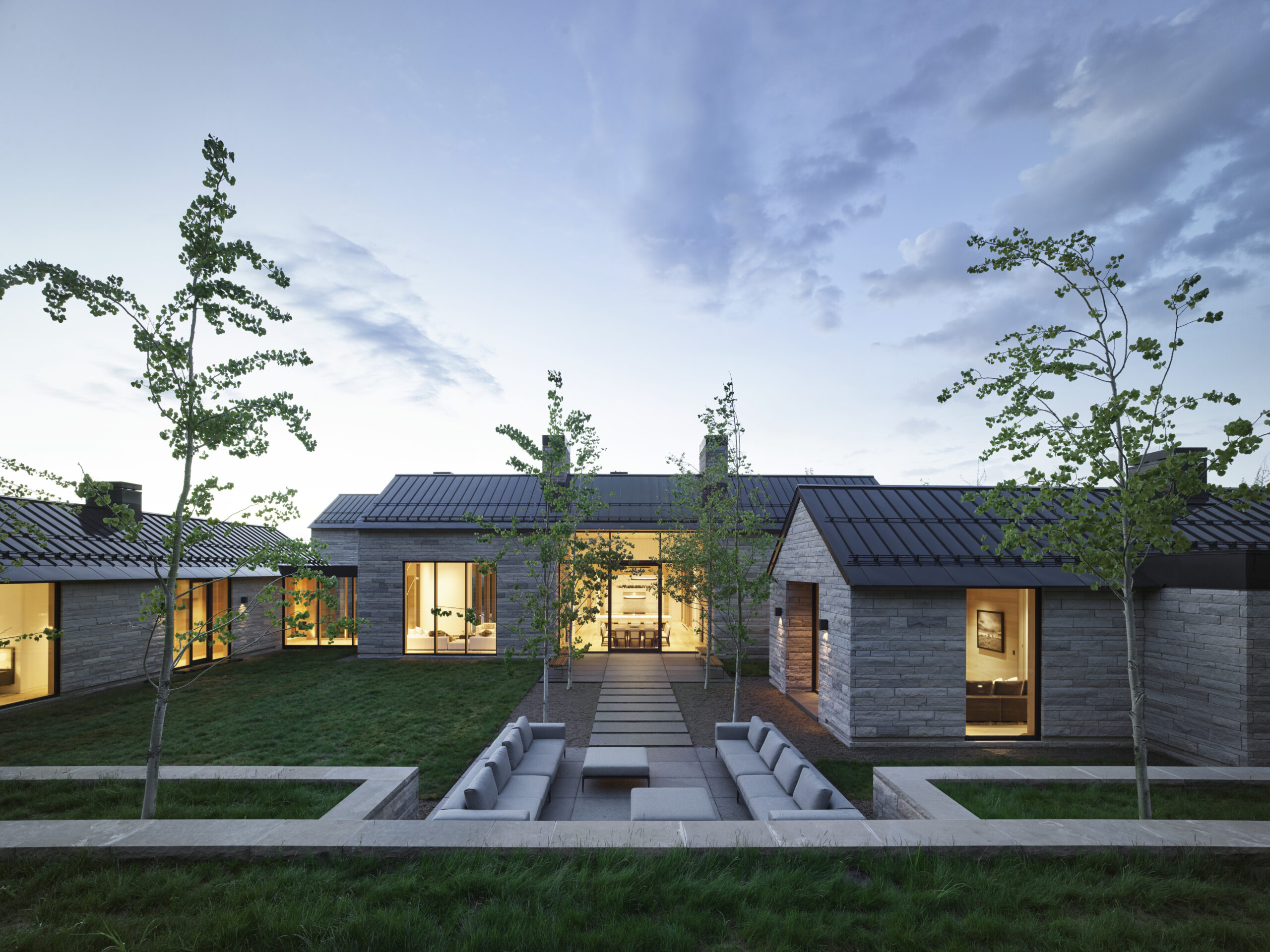
Ankeny says the application of refined elements required a layering, accomplished by the multitude of forms, so instead of having one baroque structure, multiple simple shapes add the luxurious amenities necessary for a house of this calibre. “This is in contrast to the sometimes ad hoc or organic compounds associated with historic homesteads or ranches of the area,” he adds.
The final structure serves as a pool house with a whole wall opening like a garage door to the pool area, which features a raised concrete hot tub. Almost every vista on the property is of the mountains beyond, but the clean stone buildings with their minimal overhangs and stout, to-the-point chimneys don’t detract from these views but enhance them as frames of life and craft.


